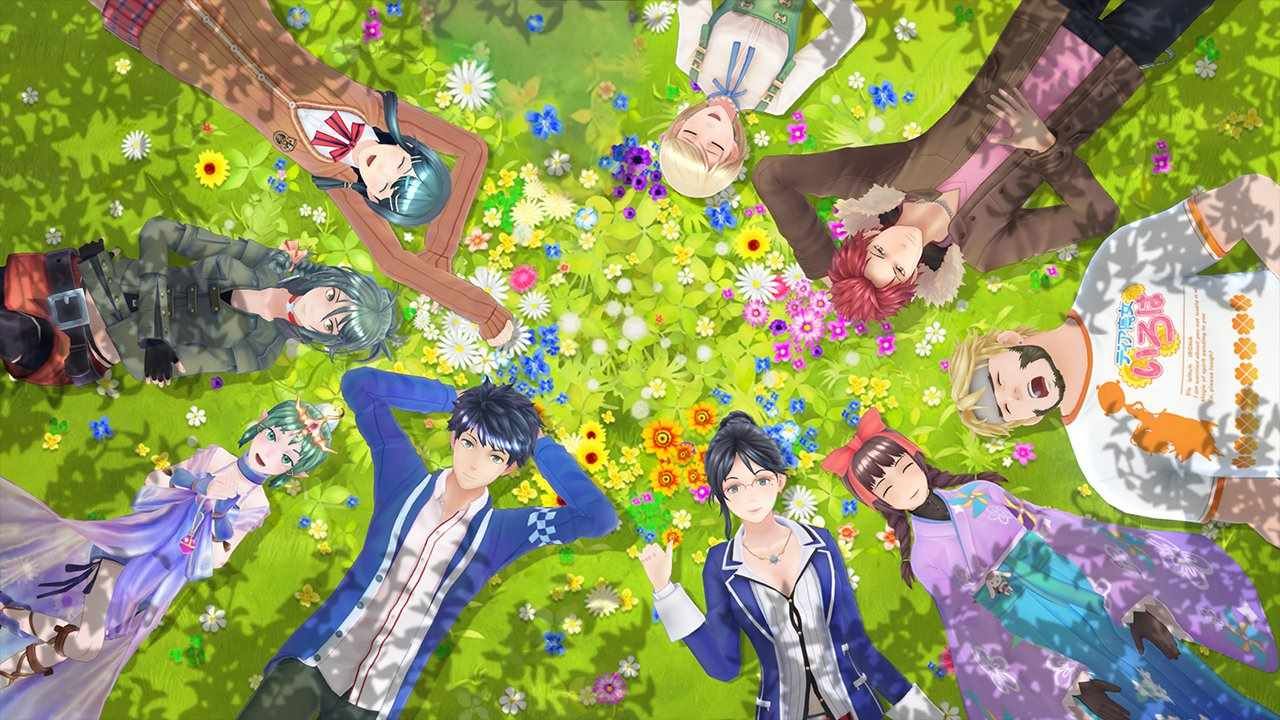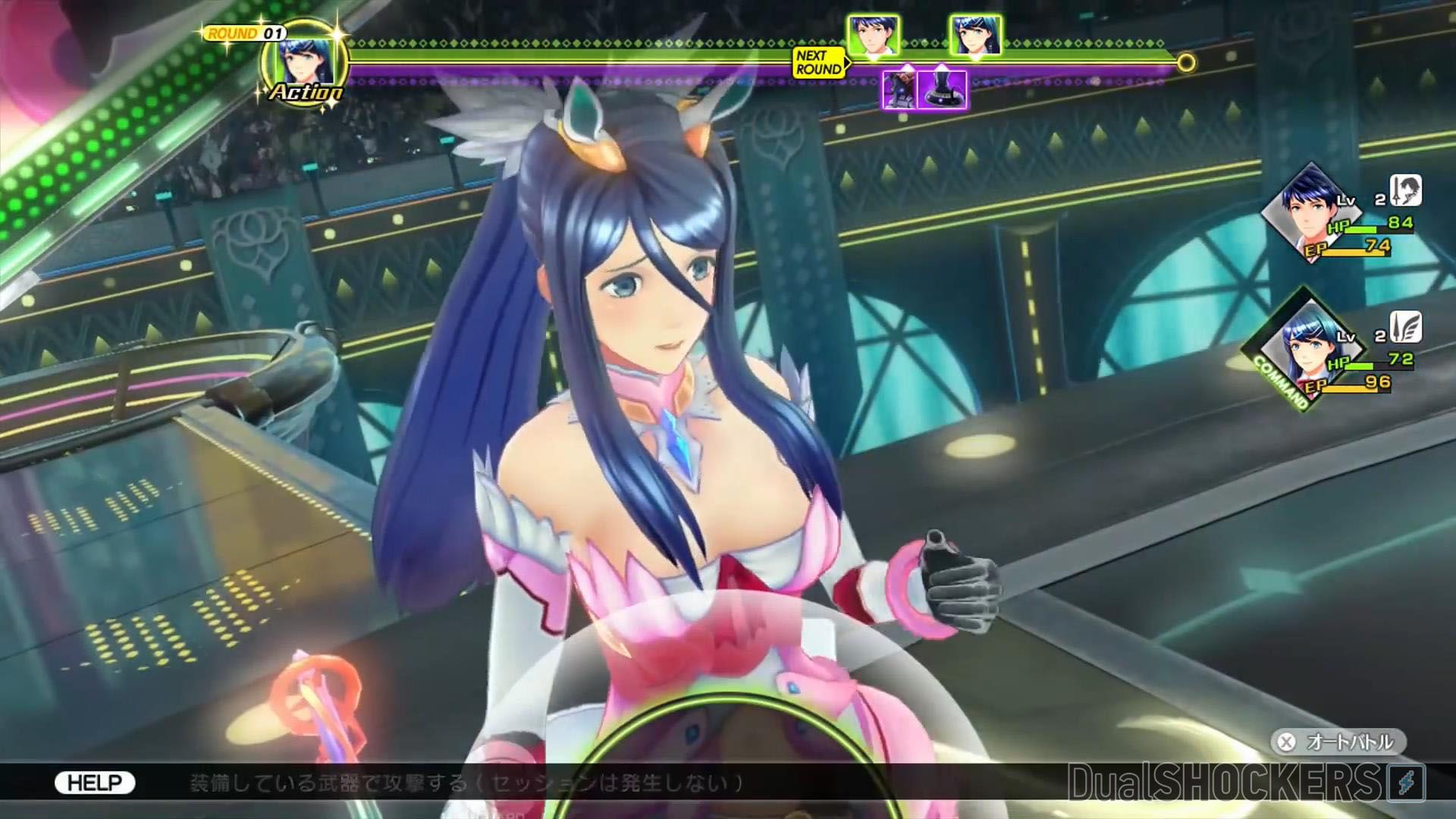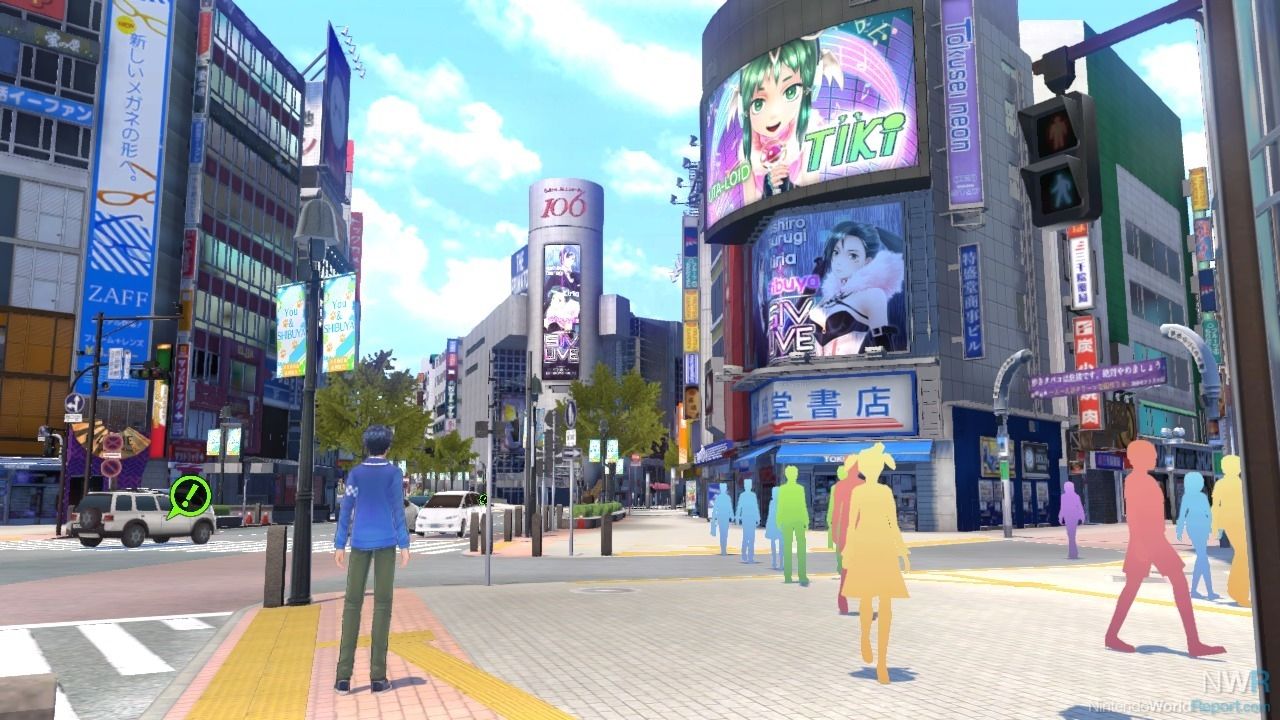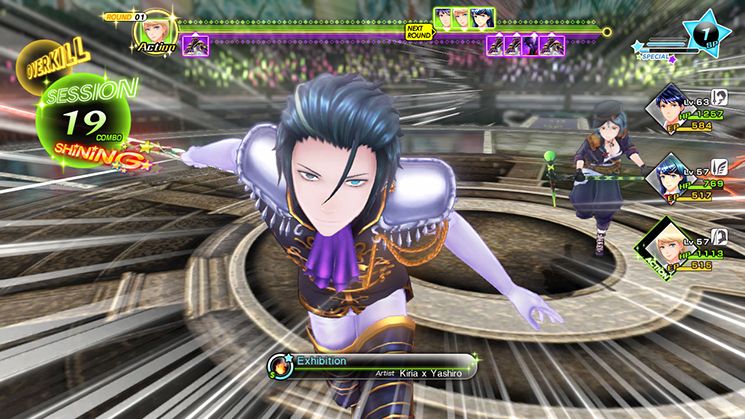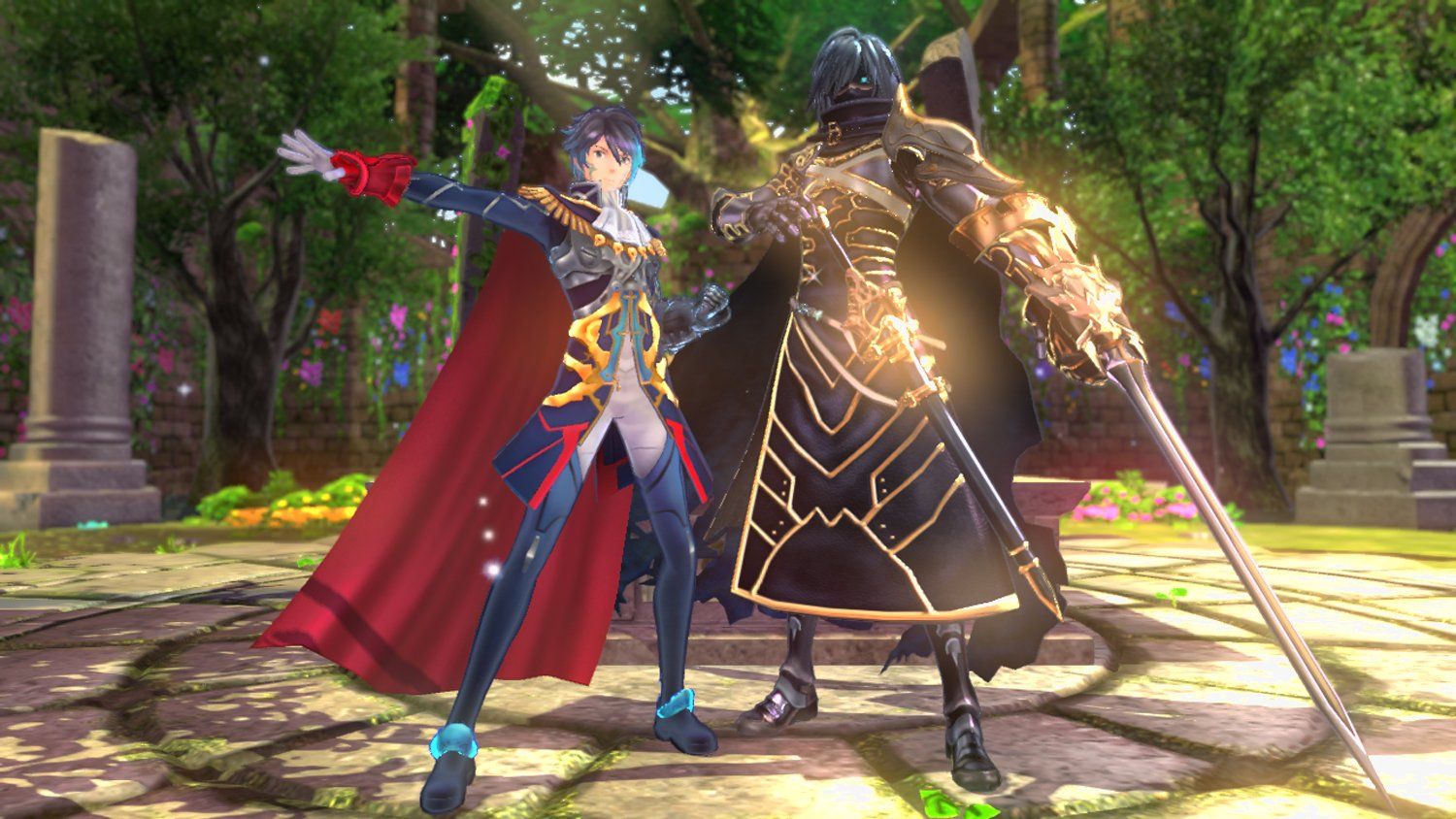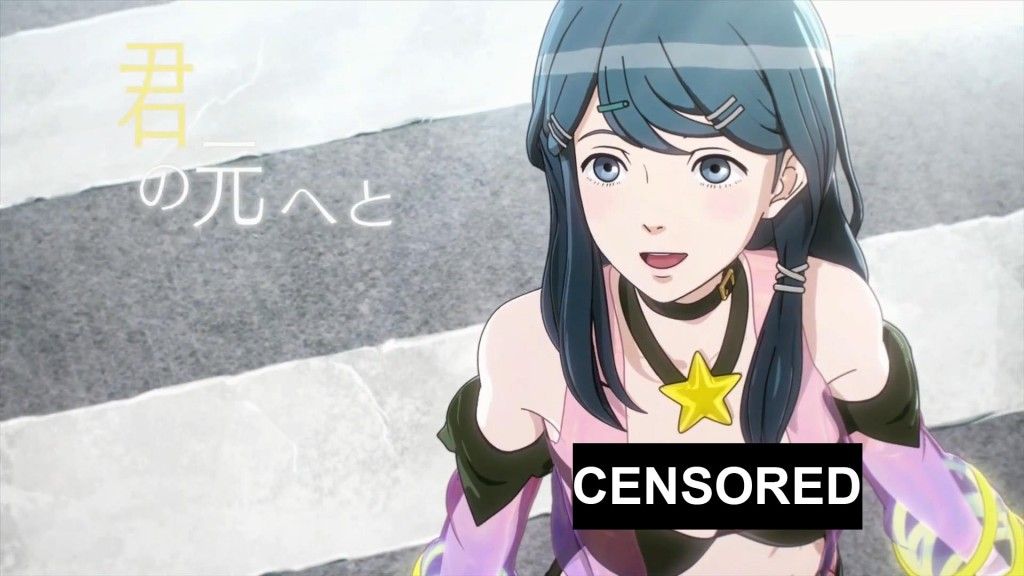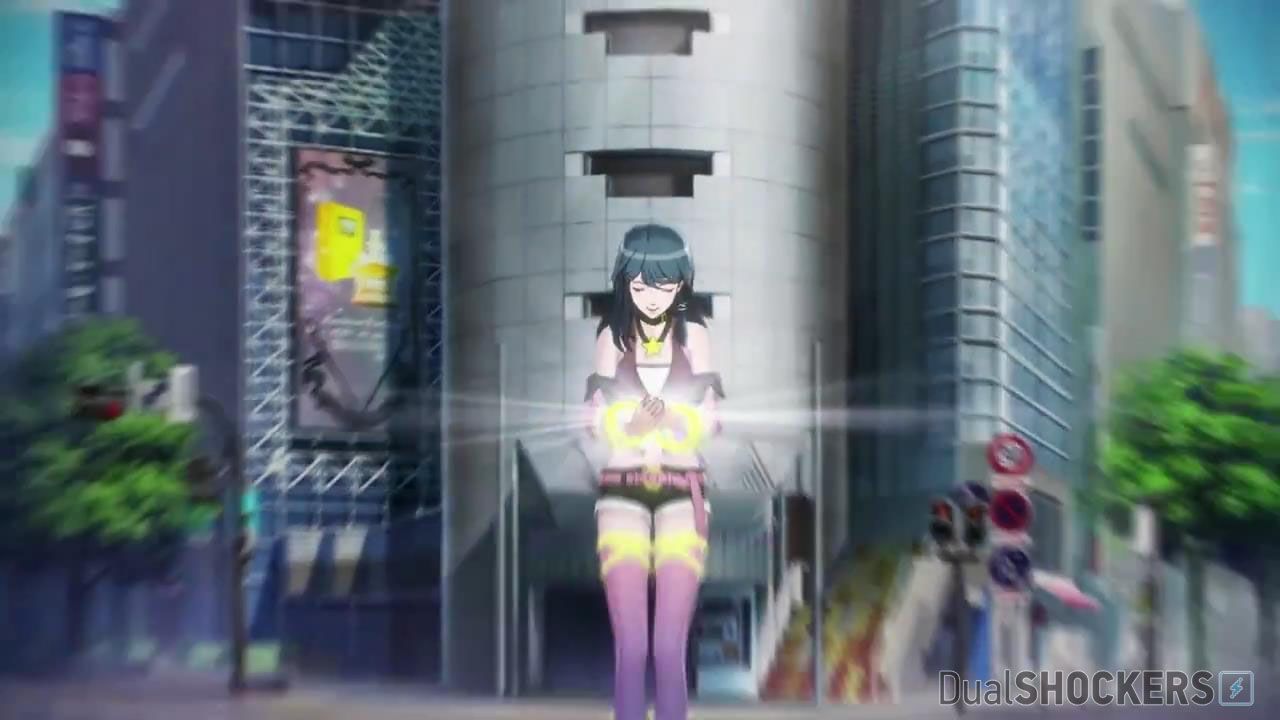I'm fairly surprised that Tokyo Mirage Sessions #FE has not been launched with more fanfare -- while Nintendo may be skeptical about whether the game will find an audience in North America, the game is for the most part superb. A fascinating take on JRPGs, the crossover successfully merges two well-established franchises while creating something entirely new. And, at the end of the day, I'm looking forward more to a sequel of Tokyo Mirage than either of the franchises that make it up.
Announced for Wii U in January 2013, Atlus' Tokyo Mirage Sessions #FE is a crossover between the Shin Megami Tensei and Fire Emblem series. Taking place in a modern day Tokyo, the game showcases a stylish and unique view of celebrities. An evil entity (Mirages) enters the world, looking to leech off of humans' Performa -- a pure energy related to talent -- only to return to an invidious dimension: the Idolosphere.
Players will take control of a small team of protagonists as they are employed by the Fortuna talent agency -- an undercover group of heroes posing as celebrity idols that look to eliminate the evil presence in the Idolosphere. To do so, these heroes (who normally have substantial talent in their own right) merge with friendly Mirages (the Fire Emblem characters) to gain unique strength and abilities.
With the loose description out of the way, the story is in many ways generic JRPG while also being entirely unique. Featuring exclusively a Japanese voice track with English subtitles, the story presents the generic "a group of young heroes with magical abilities to stop the invasion of hostile forces" set up, but adds an entirely different spin. The focus on celebrities as heroes, their ability to capture hearts and minds of the people with music, and the power of art are rarely-broached subjects in video games. So while the game keeps a similar arc to most JRPGs, it is done in a way that will surprise and delight even veteran gamers.
Alongside the interesting story in Tokyo Mirage Sessions #FE is a colorful and original artstyle. With the use of bright colors and the occasional shifts to animated cinematic cut scenes, the game feels distinct from any RPG I've played recently, let alone any game I've ever played on the Wii U. Matched with the distinct modern day Tokyo setting, the game is an invigorating detour from Steampunk vistas, fantasy worlds, dystopian future civilizations, or any of the other settings we typically see in the JRPG genre.
Matching alongside the unique world and art style is the soundtrack. The original soundtrack features music and performances crafted by the Avex Group, and boy are they catchy. While I don't have a distinct favorite among the mix, the most iconic is "Reincarnation" (performed by voice actress Yoshino Nanjō). If you want an idea of what to expect, check out the video below:
But enough with the style, story and art -- how is the gameplay? If you are a fan of the Persona series, you should feel right at home. The world is split into two distinct environments: modern day Japan and the Idolosphere. Most of your social interaction, purchases, and upgrades will happen across Japan; meanwhile, your battles are (for the most part) limited to inside of the Idolosphere itself.
However, the game often feels like a "lite" version of Persona -- more streamlined and less fleshed out in general. While that isn't necessarily a bad thing, if you find more enjoyment in exploring personal relationships and time management, this game may come across as too basic.
Once inside the Idolosphere, you will face off between a selection of random enemies. As they appear, your Mirage (typically Chrom) will warn you that other enemy Mirages are nearby -- which you can choose to avoid, or get a sneak attack on.
Combat itself is dynamic, nuanced, and rarely tedious. The action is turn-based, starting with your own characters if you manage to get a jump on the Mirage. You will have the option to attack, use a special attack (which will inflict elemental damage or provide status boosts for the party), use an item, defend or run. The new most prominent mechanic added to the formula are Session Attacks which are combos awarded when attack an enemies' weakness.
For instance, if an enemy is weak to either fire damage or sword damage, and I manage to attack that enemy with one of those abilities, it can trigger a combo from my other two party members, inflicting bonus damage while still preserving their turn in the attack order. Of course, you and your allies also have weaknesses, so the strategy can work equally effectively against you. But this new mechanic in and of itself adds enough nuance to gameplay to set itself apart.
Alongside these attacks are Duo and Dual Attacks which consume SP, a shared limited resource gained from chaining combos and successfully attacking weaknesses. These moves pack a punch, but are rarely used outside of boss battles (in my experience).
Beyond the combat, the game allows for a nice mix up of leveling. Players will not only level up the protagonist, but also the Mirages. While leveling up the protagonists themselves will provide stat boosts and passive abilities, advancing the Mirages grant Special Attacks, Session Attacks and more that applied to their Masters. Further, players will be able to upgrade their Mirages by collecting the Performa of enemies and crafting new weapons. Doing so will, in effect, acts as a prestige system resetting the Mirage to Level 1 but allowing for new abilities (alongside the previously acquired ones).
The game uses a fairly interesting Wii U integration -- unlike most games, Tokyo Mirage Sessions #FE does utilize Off-TV play. Instead, the game uses the GamePad to either display a map of the Idolosphere or as a smartphone. Frequently throughout your travels you will get notifications from the in-game messaging service, Topic, from characters looking to chat about the current mission. Topic also has a useful feature which alerts you whenever you have a craftable upgrade, letting you know it is a good time to return from battle. The implementation is sleek, simple, and well utilized in-game.
And while the Topic utilization was a nice addition, I was instantly confused why inventory management and more features weren't added to the GamePad itself. While getting there in the menu isn't more than a few button presses away, these are the exact features that the GamePad was designed for.
One thing that unfortunately must be noted is the localization -- as many have noticed and we have reported on countless times, Tokyo Mirage has a fair amount of the relatively titillating content toned down in a number of ways from the Japanese release. This ranges from germane clothing additions to actual changes to the anatomy of the characters to make them look less alluring. While I am not fluent in Japanese and can't compare the subtitles to the Japanese voice acting, the story has been altered mildly to change the characters' ages to 18.
There is some good and bad news regarding this localization. Bad news, it truly is a wasted effort in the context of this game. Localization changes are rarely (if ever) necessary, however these actions seem to serve no purpose at all. While on one hand the localization seems to cover anything remotely sexual or suggestive, it is rather loosely applied. There is a ton of cleavage and lingering footage on female body parts. So not only is it unfortunate that we get the changes that feel entirely unnecessary in a "T"-rated game, but they also feel half baked on purpose.
On the bright side, the localization does little to hinder the stellar gameplay, ambiance, or tone of the game. In fact, if you weren't already aware of the changes made and weren't fluent in Japanese, you may not even have noticed that something had been altered.
Another gripe I have with the game is the rigid save functionality. I have lost a fair amount of progress countless times to the lack of an auto-save function. While the manual save is sign-posted early and often in-game, it still feels like an unnecessary hindrance. Manual save files are fine in most games, however it is regularly accomplished alongside auto-save checkpoints to make the player feel less responsible to constantly save. Though I rarely died on Normal difficulty, the few times I did, I would lose an hour or so of progress.
As a final note, Tokyo Mirage Sessions #FE isn't going to immediately appeal to everyone -- many people prefer their JRPGs wrapped in social critique, darker stories, and complexity. In fact, many fans of the Shin Megami Tensei and Fire Emblem franchises were likely expecting Tokyo Mirage to mirror that tone. However, while the game may be less appealing to those veteran JRPG players, the rock-solid battle mechanics should more than make up for it.
All in all, Tokyo Mirage Sessions #FE is not only one of the best Wii U games I have played in years, but also one of the best JRPGs I put my hands on in a while. If you own a Wii U, Tokyo Mirage is a must-have in your library. Whether you are a die-hard Shin Megami Tensei or Persona fan, this game will scratch that itch. Despite some half-baked and unnecessary localization, the game is a unique spin on a tried-and-true formula, and one of the best JRPGs to ever grace a Nintendo console this decade.

